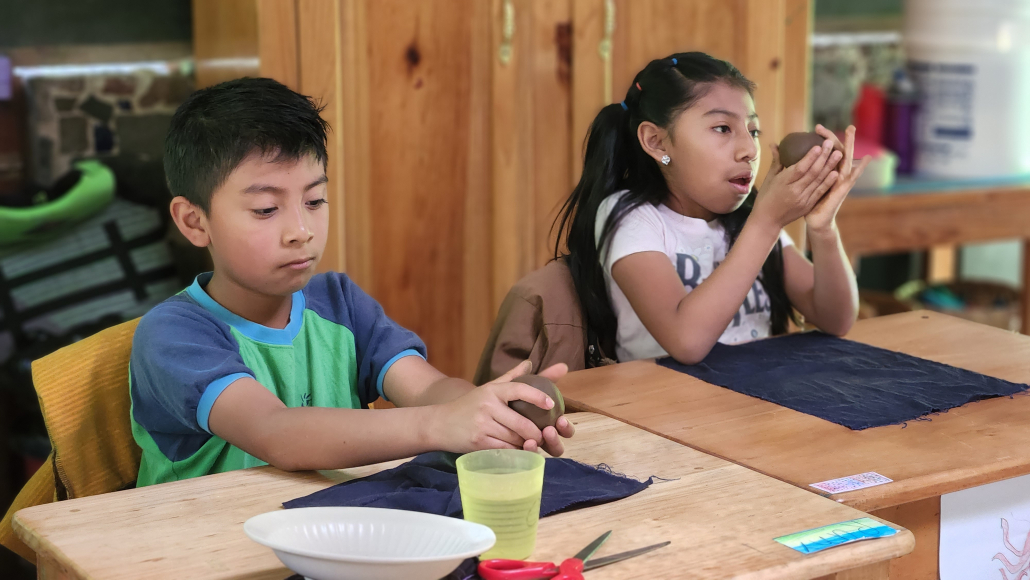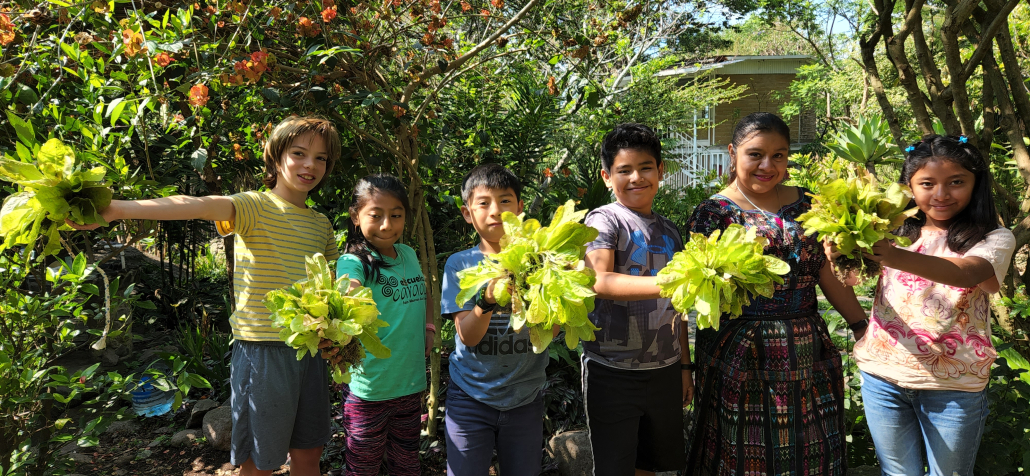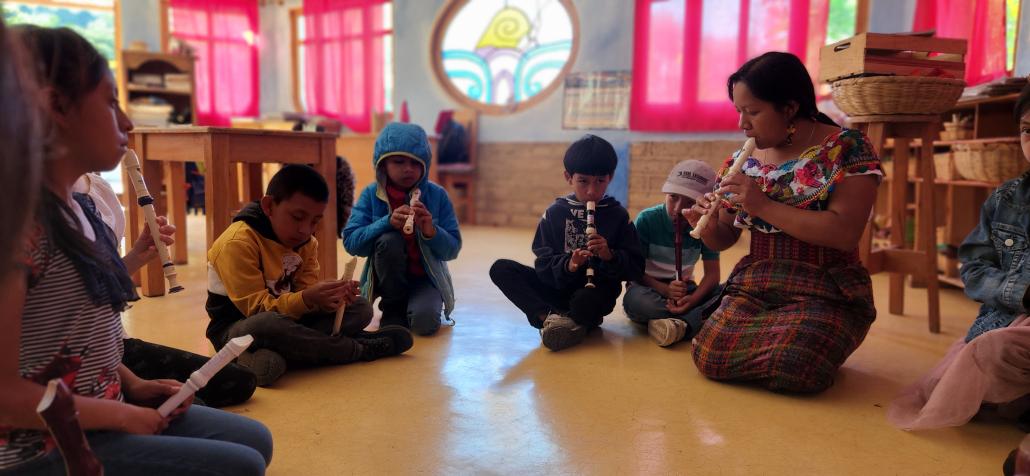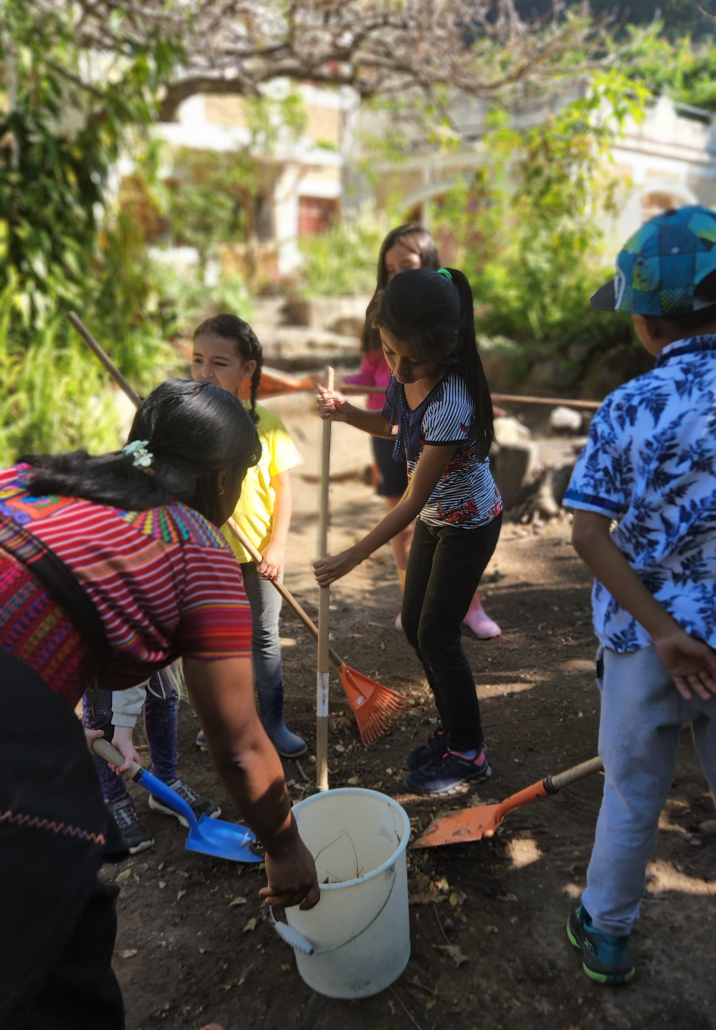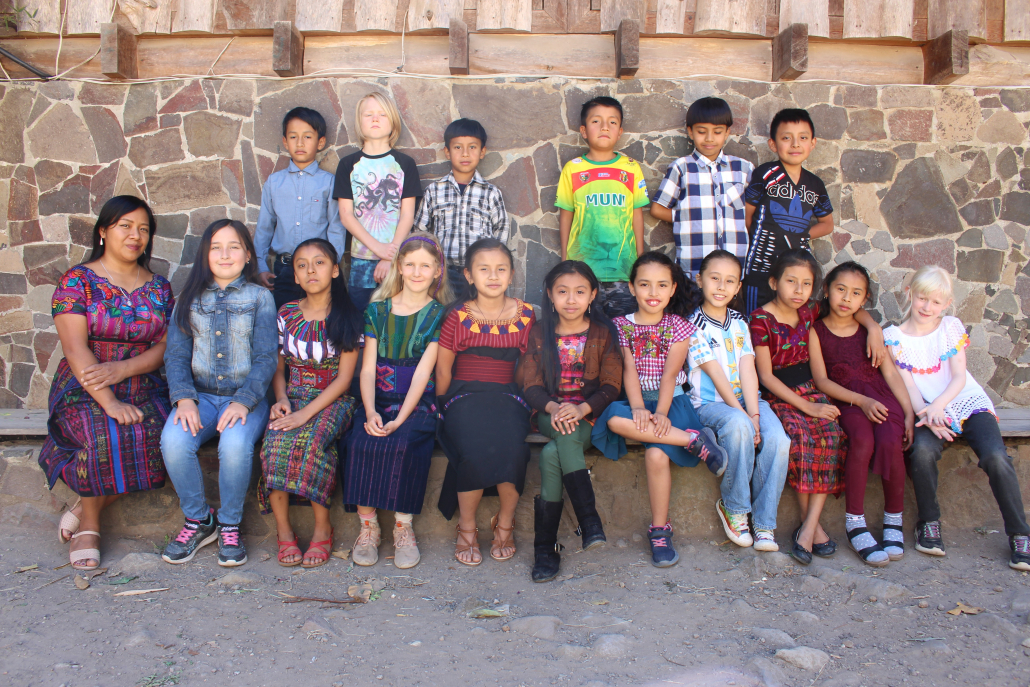
At 8 years there are notable physiological, psychological and cognitive changes in children.
They develop a strong walk, speech sounds are formed increasingly in the center of the mouth, and are articulated more directly, their constitution is clearly stronger. The heart becomes larger, it is able to receive more blood volume and a new ratio of respiration and blood circulation is established at a rate of one breath for four beats. Growth begins to focus more on the limbs and metabolism and increases the width of the trunk. In some this age is marked by symptoms of fatigue, headache and stomachache, nausea, dizziness, varying appetite, asthma, eczema and sleep disorders.
In third grade the child experiences a duality in his/her feelings when he/she perceives the world. The inner subjective experience and objective reality of the world are facing within the soul of the child. At this age it is often that the child feels a surge in thequestioning of things. Also they begin to feel more doubt, loneliness and an incipient tendency to criticize. The conflicting emotions from the sense of loss of their ‘early-childhood’ world and a sense of wonder coming from a new way of observing the world, often cause confusion and uncertainty that is expressed through obvious behavioral changes.
As they become more aware of themselves and the physical environment where they live, they emerge with a new interest in the practical and material world. After practicing their literacy and numeracy skills now to a higher degree, they can apply them to a larger repertoire of everyday situations which require measurements or weights, the solving of problems using the four processes, and writing formal letters.
The classroom teacher helps transform the initial feeling of separation from the physical world, in a sense of responsibility to the world involving the entire class in the experience of working together in construction, horticulture and other various jobs. Also images of the Old Testament, its laws and leadership help them promote their internal security. It is important for teachers to provide clear guidelines for behavior and give children confidence in the authority of teachers.
In fourth grade, the self-activity of the child harmonizes the relationship between breathing and blood circulation. Confidence in their new state is expressed in a quality of enthusiasm and vigor to face the world and learn from it. Natural sciences explicitly begin with a study of the animal kingdom in relation to the human being, from the morphological point of view.
The purpose of the fourth grade is mostly positively to channel the powerful energy that the 10 year-old children bring to the classroom. Students need to be challenged, tested in all aspects of their work, “work, work and a lot of work” is the best slogan for this grade.
Through imaginatively presented lessons, teachers respond to the interest of the children for more specific areas of knowledge and provide opportunities for more independence in their work. They need to find a new relationship with their work, peers and teachers.In grade four we bring stories of the nordic gods and other stories where darkness and evil become more specific, the study of the local environment with its social and geographical sense and begin the process of mapping.
Sources: “Plan de Estudios de la Pedagogía Waldorf-Steiner”, de Tobias Richter; “Pedagogía Waldorf, una Educación hacia la Libertad”, de Frans Carlgren
